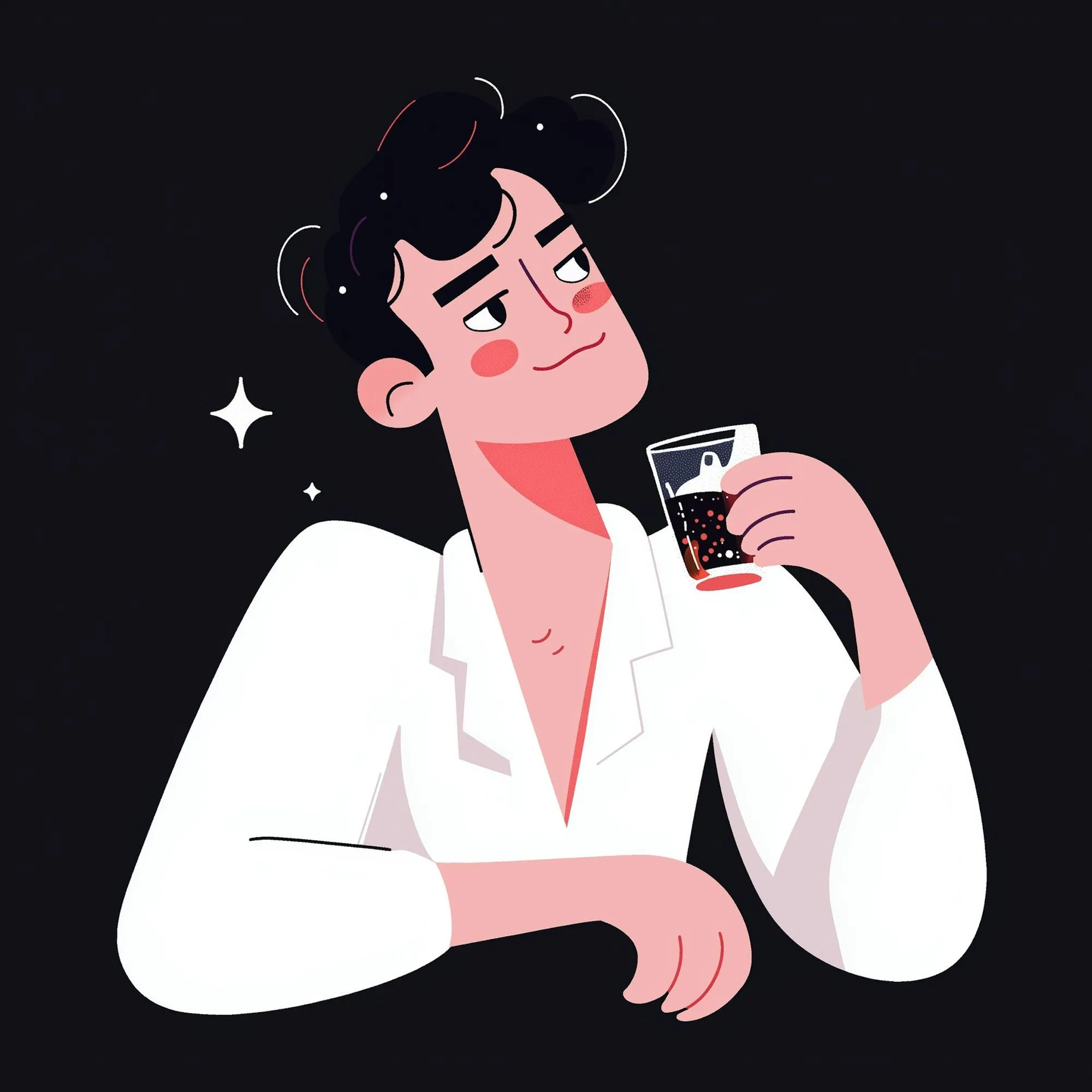AI Generated Headshots: Best Tools & Tips to Create Professional Profile Photos Online
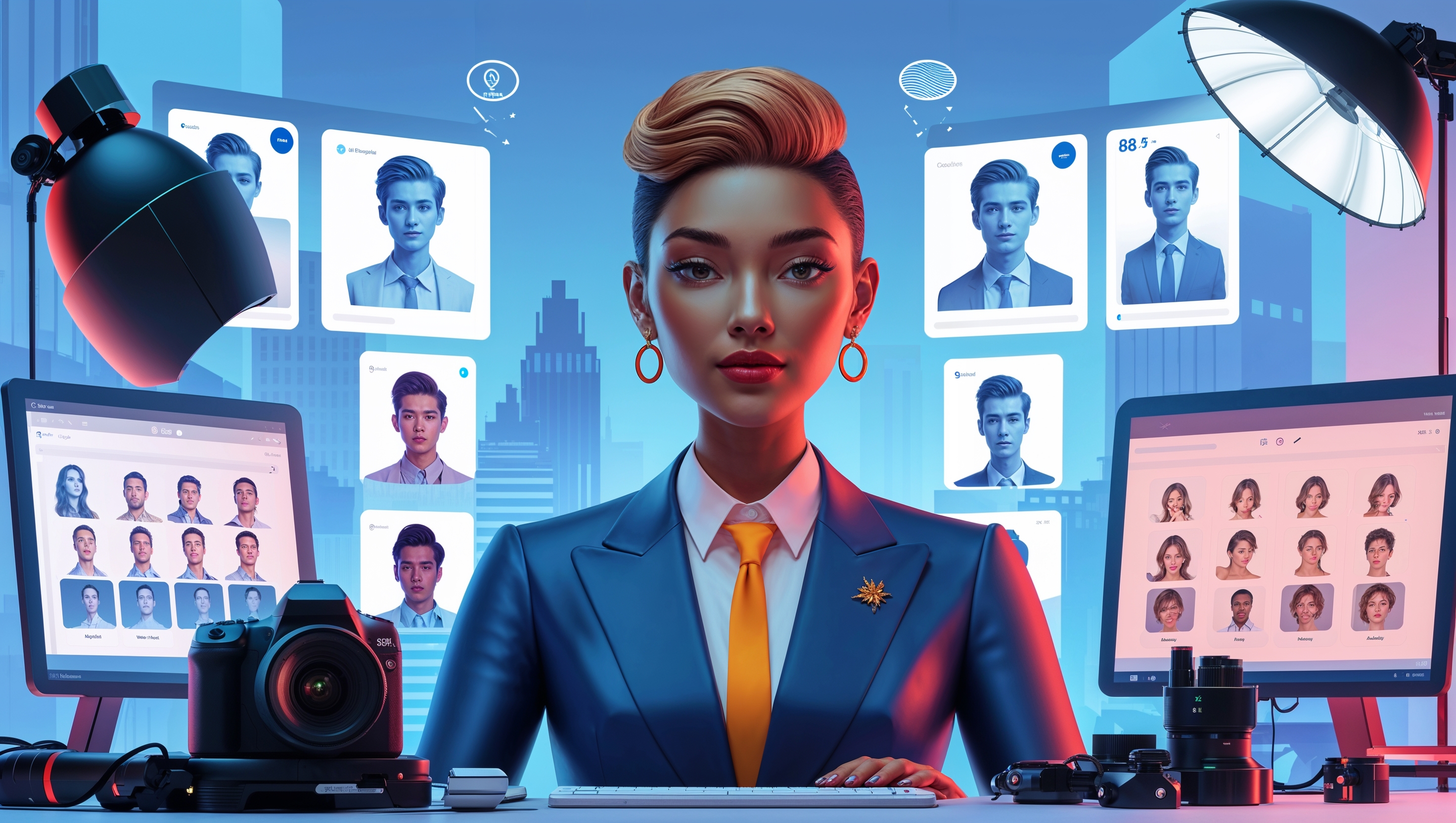
AI generated headshots are revolutionizing how professionals build their online presence. As someone deeply involved in testing and reviewing AI photo tools, I’ve seen firsthand how much these platforms have evolved in realism, flexibility, and ease of use.
Not long ago, getting a professional headshot meant booking a photographer, dressing up, and spending hours in a studio. Now, with the best AI headshot generator tools, you can create high-quality, studio-like portraits in minutes—right from your phone or laptop.
From entrepreneurs updating their LinkedIn headshots to job seekers crafting business profile photos, the demand for polished, AI-generated images is rapidly growing. Many tools now offer free options, realistic enhancements, and even customization for specific use cases like resumes or corporate websites.
If you're wondering how to create headshots with AI that don’t look “fake” or overprocessed, you're not alone—and you're in the right place. As a specialist who's tried nearly every major platform, I’ll guide you through what works, what doesn’t, and how to get results that truly stand out.
1. What Are AI Generated Headshots?
AI generated headshots are digitally created or enhanced portraits produced by artificial intelligence algorithms trained on thousands—often millions—of real-life photos. These tools leverage machine learning to transform a user’s uploaded image into a professionally styled headshot that mimics studio photography in lighting, background, attire, and sharpness.
Unlike AI avatars, which are often stylized or cartoonish, AI headshot tools prioritize realism and professionalism. They are designed to look natural—helping users present a credible and polished version of themselves for resumes, personal branding, and business profiles.
I’ve worked with a wide range of AI tools, from simple browser-based generators to advanced software platforms used by companies for corporate branding. The difference between a generic photo filter and an effective AI headshot tool lies in how it renders facial symmetry, lighting balance, background blur, and even simulated depth of field. These elements combine to create what looks like a DSLR-taken photo, even though no camera was used.
Some of the top AI photo tools for LinkedIn headshots now allow for background switching—from blurred office scenes to minimalist whites—without compromising facial clarity. This level of customization makes AI-generated headshots a smart alternative to expensive studio shoots.
Beyond convenience, these tools also serve a powerful purpose: accessibility. Not everyone has the time, budget, or location advantage to visit a professional photographer. With AI-generated portrait images, anyone can present themselves professionally regardless of geography or financial limitations.
One common misconception is that AI headshots always look fake. In reality, the best tools produce images indistinguishable from real photographs, especially when you follow their best practices—like uploading well-lit source images and choosing neutral expressions.
In short, AI-generated headshots are not just a trend. They’re a smart, scalable, and increasingly necessary option for today’s professionals. If you need to create studio-quality headshots with AI, whether for resumes or your company’s About page, these tools offer a compelling blend of quality and speed that’s hard to beat.
2. Best AI Headshot Generator Tools in 2025
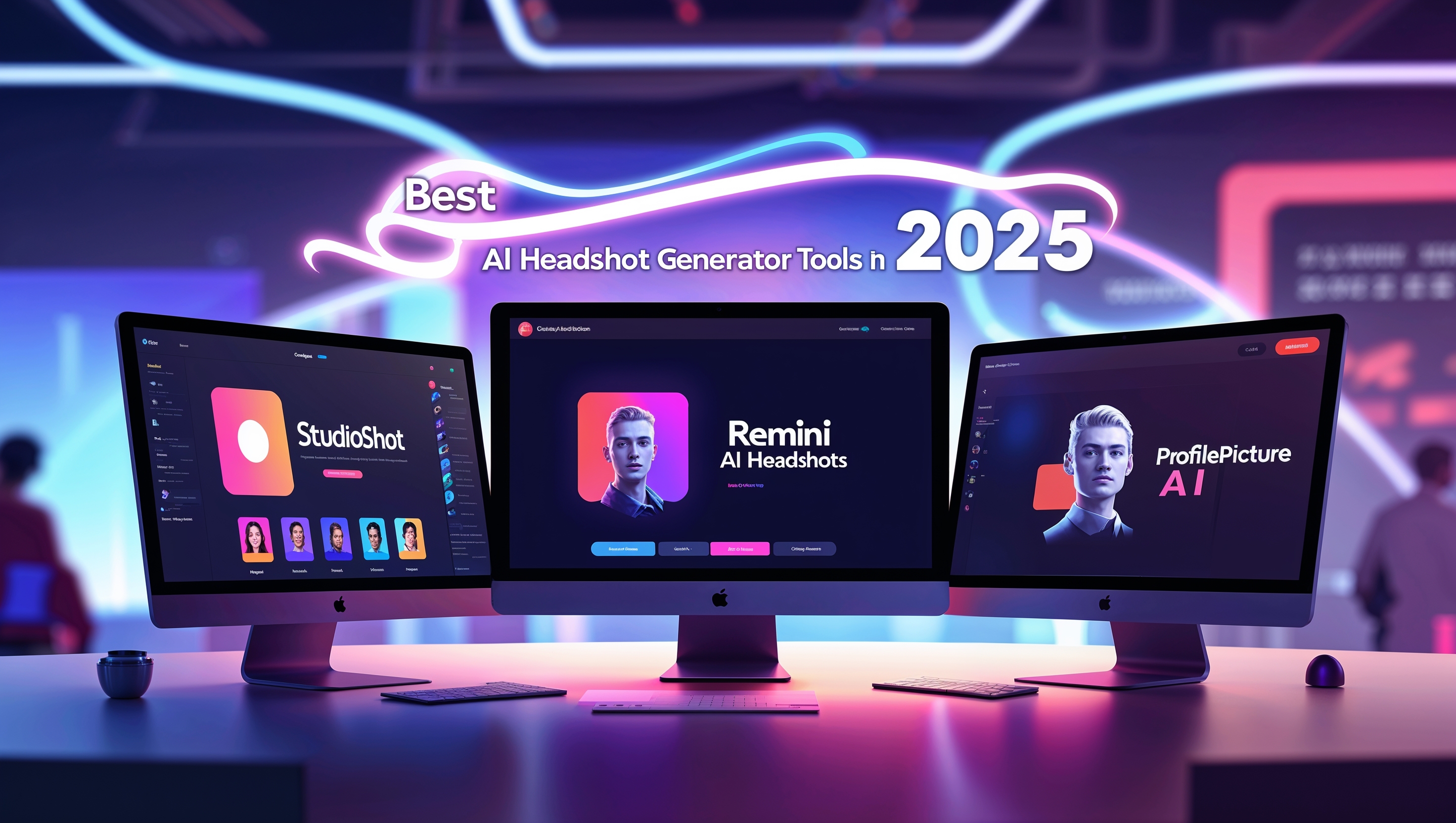
Finding the best AI headshot generator tools in 2025 depends on your specific use case, but after using dozens of them across client and personal projects, several consistently stand out.
Some offer free trials with limited features, while others require a one-time or subscription fee for full access. Either way, the value you get—especially when compared to traditional photography—is significant.
Below are top-performing tools I’ve tested and recommended for different user needs:
1. StudioShot AI
This platform remains a favorite for business users because of its hyper-realistic output and customization flexibility.
• Generates 40+ headshots from a single photo upload.
• Ideal for corporate team pages or executive branding.
• Offers background options and outfit retouching.
2. Remini AI Headshots
A consumer-friendly app with a focus on ease of use and social profile optimization.
• Best for LinkedIn, Instagram, and personal branding.
• Free to try, with premium packages offering better image quality.
• Strong at smoothing imperfections without losing realism.
3. ProfilePicture AI
Designed specifically for AI-generated business profile photos, this tool shines for its style variety.
• Offers AI-generated portraits in over 50 visual styles.
• Great for creatives, marketers, and startup founders.
• Works well for virtual headshots using AI in dynamic industries.
4. Secta Labs
A newcomer that’s gained traction for providing natural lighting and skin tone preservation.
• Aimed at realistic AI headshots for resumes.
• Offers automated posture correction and natural facial enhancements.
• Minimal processing artifacts compared to others.
5. HeadshotPro
A corporate-focused solution for startups and remote teams needing scalable, AI-generated photos for professional profiles.
• Upload in bulk, get team headshots with uniform backgrounds and lighting.
• Custom brand settings for background, colors, and style.
• Impressive AI headshot software for professionals and HR use.
When comparing these tools, here are important features to consider:
• Output resolution – High-res images work better across platforms.
• Style control – Some allow outfit swaps or facial expression tweaks.
• Batch processing – Helpful for team or business use.
• Data security – Ensure your photos aren't reused for training.
In testing, I've found that realistic AI headshots for resumes tend to perform best when generated by tools like Secta Labs or StudioShot AI. Tools that over-process or add unnecessary effects might seem fun but aren’t ideal for professional platforms.
Another standout feature across most leading tools is the use of deep learning models that understand facial symmetry and background harmony. This is what separates high-end AI headshot apps from gimmicky filter-based generators.
If you’re choosing between a free AI headshot generator and a paid one, understand that free tools often limit the resolution or variety of output images. For basic personal branding, that might be enough. For executive bios or formal applications, the investment in a paid AI headshot software is usually justified.
The good news is that almost all major tools provide a preview or example output before committing. Use this to your advantage. Upload a few clear photos, preview results, and pick the tool that aligns with your industry and style.

3. How to Create Headshots with AI
Creating a professional-grade headshot using AI is more straightforward than ever, but the process—and results—can vary greatly depending on the platform you choose and the quality of your source image.
Begin by selecting a reputable tool. Based on my experience, platforms like StudioShot AI, Secta Labs, and HeadshotPro deliver results that rival traditional photography. Free AI headshot generators like Remini are useful for casual use but may not meet professional standards.
Once you’ve chosen your tool, you’ll typically be prompted to upload 3 to 10 source photos. These should be high-resolution, front-facing, well-lit, and taken without filters. Avoid harsh shadows, busy backgrounds, or extreme facial expressions.
After upload, the tool processes your image using trained AI models that adjust posture, enhance clarity, remove blemishes, and simulate soft lighting and shallow depth of field. Most tools will then provide between 20 and 100 AI-generated portrait images to choose from.
Compared to traditional photography, this process is quicker, cheaper, and often more versatile:
- Traditional Studio Photos
• Cost: $150–$600 per session
• Time: 1–2 hours plus edits
• Limitations: Requires location, attire, scheduling - AI-Generated Headshots
• Cost: Free–$50 average
• Time: 10–30 minutes end-to-end
• Flexibility: Multiple styles, backgrounds, outfits
The most realistic AI headshots for resumes tend to use neutral lighting and professional attire. Some AI headshot apps also allow you to simulate formal clothing, such as a blazer or collared shirt, which can be a game-changer for remote workers or digital nomads.
Virtual headshots using AI are also ideal for team pages and remote onboarding. Tools like HeadshotPro let companies generate uniform profile images for distributed teams without needing in-person shoots.
The key differences between tools often lie in customization:
- StudioShot AI allows fine-tuning of eye contact, jawline, and clothing texture.
- Remini AI emphasizes skin smoothing and slight enhancement—better for personal branding than formal resumes.
- ProfilePicture AI offers stylized versions with artistic flair but may lack realism.
- Secta Labs uses realistic lighting and subtle enhancements for a natural look.
For personal branding, AI-generated business profile photos should reflect approachability, clarity, and relevance to your niche. Creators and entrepreneurs might choose warmer tones and relaxed attire, while corporate roles require more formal imagery.
Data privacy is another consideration. Choose platforms that offer image deletion, do not retain your photos for model training, and encrypt uploads. Most leading tools are transparent about their practices.
A few additional tips I recommend as an expert:
- Upload images in varied lighting to give the model more reference data.
- Use a plain background whenever possible to help the AI isolate your features.
- Keep accessories minimal—too much jewelry or large glasses can confuse some models.
- Review all generated outputs and shortlist based on expression, eye sharpness, and framing.
Finally, remember that AI headshots are tools—not replacements for human branding judgment. Use them smartly. Match your chosen image with the tone of your platform, whether it’s your LinkedIn, resume, or company profile.
By understanding the nuances of how to create headshots with AI, you’re not just saving time—you’re investing in a consistent, elevated digital presence that speaks before you even say a word.
4. Comparing Free AI Headshot Generators vs Paid Tools
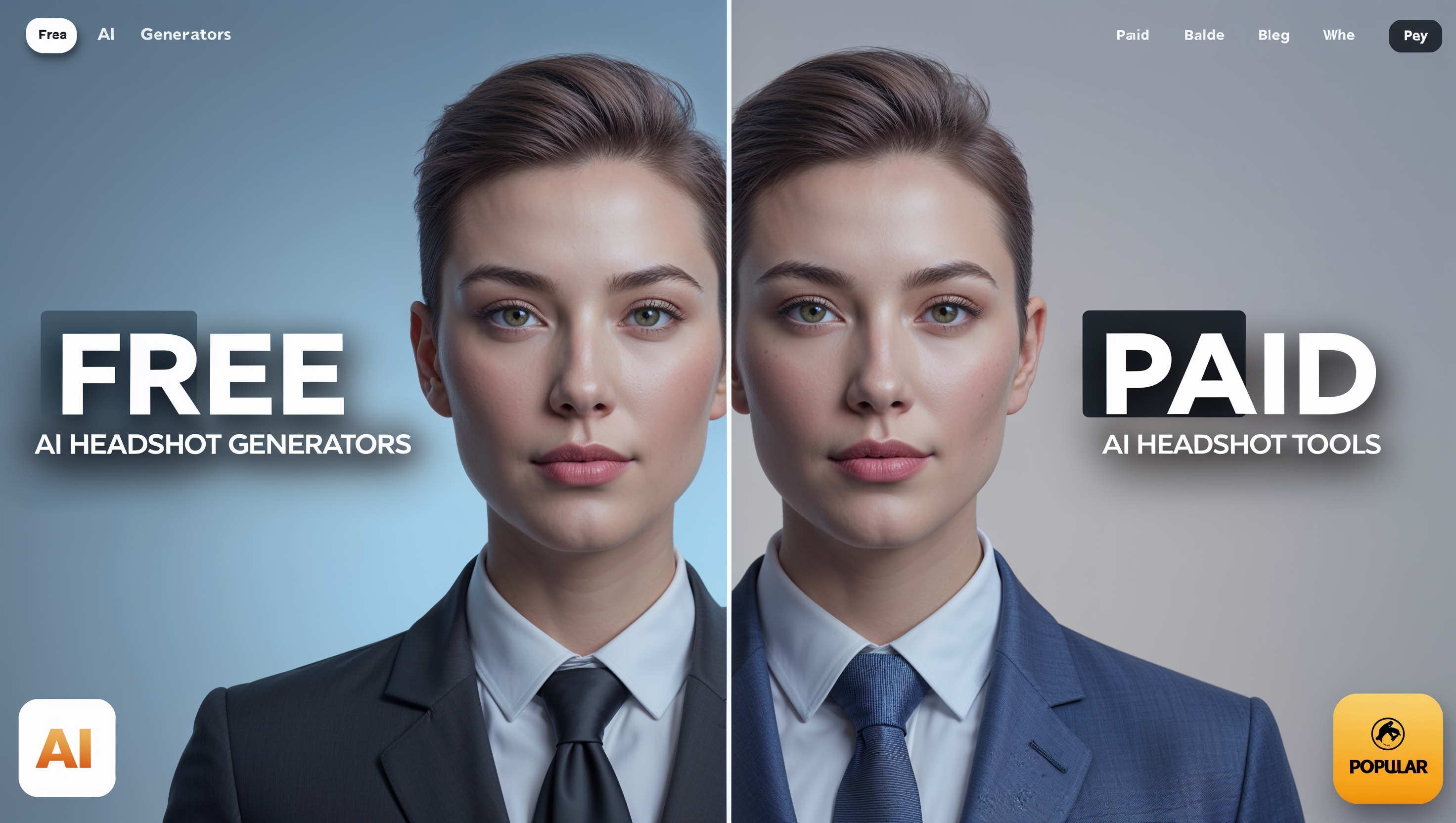
Free AI headshot generators are appealing because they allow users to test functionality without financial commitment.
These platforms typically offer limited features, such as lower resolution, fewer style choices, or watermarked images.
Free tools are ideal for casual use or personal branding experiments where perfection isn't critical.
If you're just exploring AI-generated headshots or building a social media profile, a free option can be a decent starting point.
However, when you need AI-generated business profile photos for a resume, client pitch, or executive profile, free tools usually fall short.
They may lack the polish, realism, and customization needed for professional presentation.
Paid tools, in contrast, unlock enhanced image quality, more control over styles and backgrounds, and priority rendering queues.
This is where tools like StudioShot AI, HeadshotPro, and Secta Labs clearly outperform their free competitors.
They allow you to create studio-quality headshots with AI that feel natural, confident, and consistent with your brand.
You also gain access to features like virtual outfit changes, skin tone matching, and corporate background options.
These can be critical if you're building a team page or presenting your profile to a corporate audience.
Paid tools often offer better privacy policies, including encrypted uploads and automatic image deletion.
This matters when uploading personal portraits, especially for use on platforms like LinkedIn.
In terms of speed, premium AI headshot software for professionals typically processes images faster and with fewer errors.
Free tools occasionally distort facial features or overprocess expressions due to limited model training.
I’ve seen better lighting effects, more natural blurring, and stronger eye contact reproduction from premium tools.
Here’s a practical breakdown for comparison:
- Free AI Headshot Generators:
• Pros: No upfront cost, easy to try, useful for basic output.
• Cons: Low resolution, limited styles, may include watermarks or brand logos.
• Best For: Students, early-career professionals, social media. - Paid AI Headshot Tools:
• Pros: High realism, no watermarks, advanced customization, faster rendering.
• Cons: Requires investment (typically $10–$40).
• Best For: Corporate profiles, resumes, business branding.
In my experience, investing in even a mid-tier AI photo tool pays off when the output becomes a part of your personal or professional narrative.
Using free tools can sometimes mean spending hours retouching afterward—or worse, settling for an image that doesn’t reflect your potential.
If your headshot represents your first impression in a digital space, it’s worth choosing a solution that does you justice.
✅ Comparison Tables
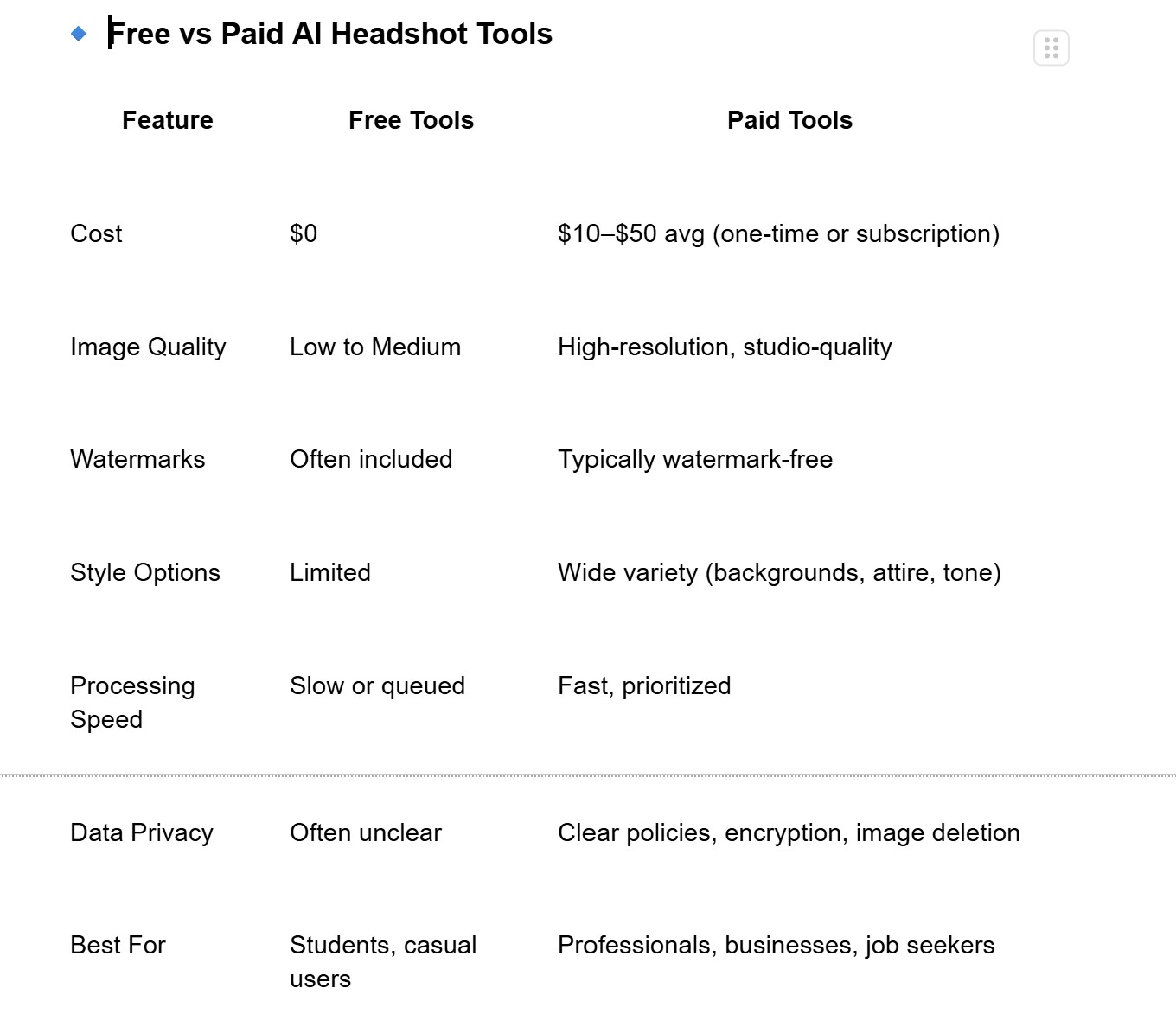
5. AI-Generated Headshots for Different Use Cases
One of the most compelling advantages of AI-generated headshots is their versatility across a wide range of use cases.
From entrepreneurs and job seekers to corporate teams and freelancers, these tools are shaping modern digital identities.
For job applications, tools like Secta Labs provide realistic AI headshots for resumes that replicate formal photography settings.
These typically feature neutral backgrounComparing Free AI Headshot Generators vs Paid Toolsds, soft lighting, and attire enhancements like suits or collared shirts.
For business branding, platforms like StudioShot AI and HeadshotPro offer AI-generated business profile photos tailored to fit executive-level presentation.
Startups and small businesses can benefit from scalable solutions that allow every team member to maintain a unified professional look.
Many of my clients have used these tools for About pages, pitch decks, or investor presentations with excellent results.
In the personal branding space, tools like Remini and ProfilePicture AI offer more stylized results.
These are particularly popular with creators, coaches, and social sellers looking to add personality to their image.
Here, expression, background, and vibe matter more than strict formality.
Virtual headshots using AI are also a hit in remote work culture.
Distributed teams often struggle to coordinate physical photo shoots, especially across regions.
AI-generated portraits bridge that gap, allowing HR to generate headshots that look consistent across all employee profiles.
LinkedIn is arguably the most important platform for AI photo tools.
Tools optimized for LinkedIn headshots focus on clear facial framing, balanced tones, and eye-level angles.
HeadshotPro and Remini both support export formats optimized for LinkedIn’s image specs.
Some AI tools even cater to niche applications like dating profiles or acting headshots.
Although these require different emotional tones, the underlying tech remains consistent.
Key benefits of AI headshot apps for personal branding:
• Control over the visual tone of your presence
• Quick experimentation with multiple “looks”
• Cohesion across platforms like Twitter, Medium, and LinkedIn
In creative industries, AI avatar vs AI headshot tools often overlap.
Avatars lean more artistic, while headshots serve direct professional needs.
Still, both have found a place in modern branding toolkits.
Here’s what I recommend for different goals:
- Corporate Profiles: HeadshotPro, StudioShot AI
- Resume Headshots: Secta Labs, Aragon AI
- Social Media Branding: Remini, ProfilePicture AI
- Team Pages: HeadshotPro, StudioShot AI
- Creative Portfolios: ProfilePicture AI, Fotor
Choose your tool based on tone, output quality, and platform where your image will live.
AI-generated headshots now support the full range of online identity building—and are only getting better.
6. LinkedIn and Resume Optimization with AI Headshots
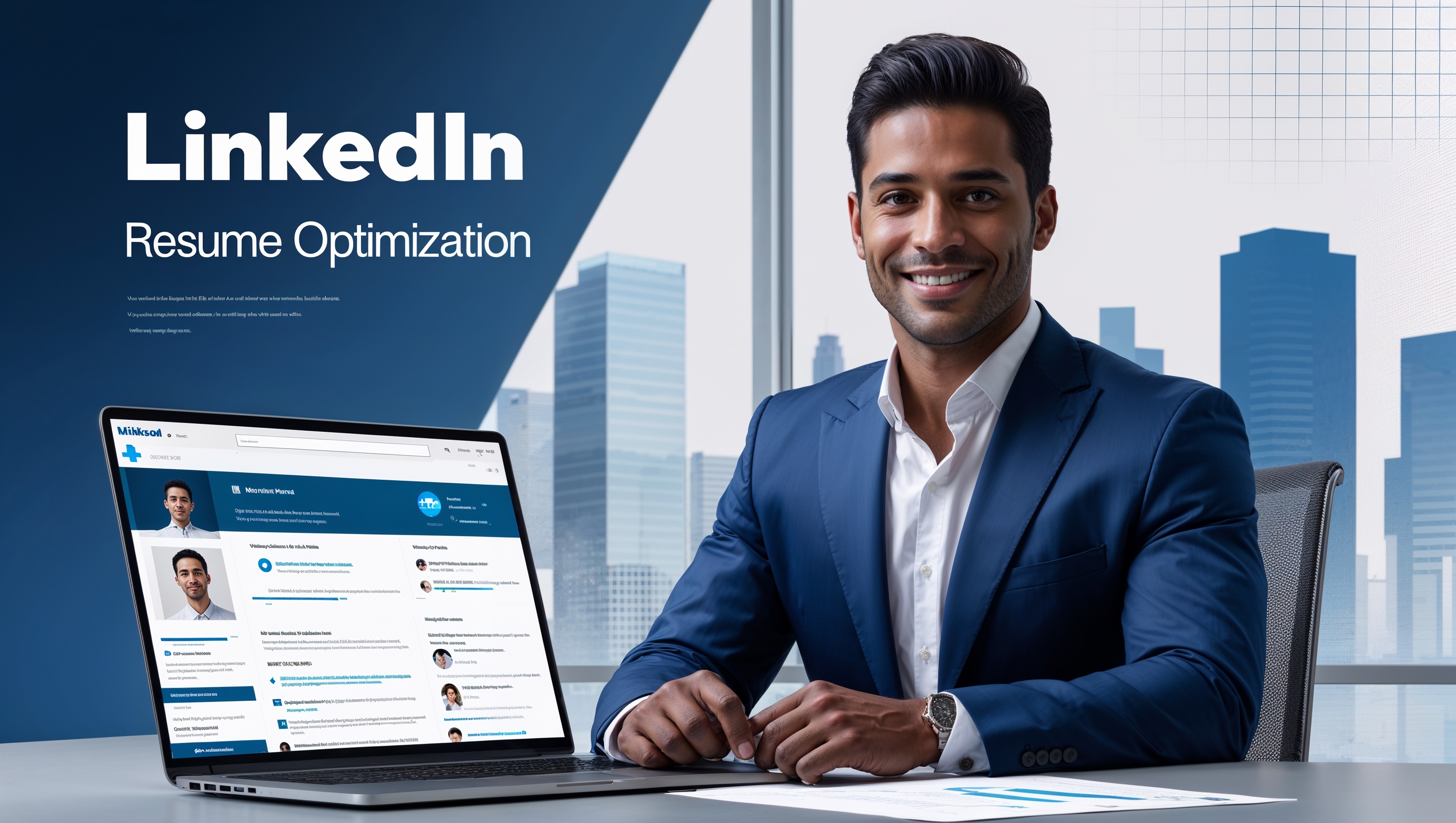
Your headshot plays a critical role in first impressions on LinkedIn and your resume.
AI-generated photos for professional profiles need to match the tone and culture of your industry.
A tech consultant’s headshot should look different from a UX designer’s or a real estate agent’s.
Most free AI headshot generators will give you generic outputs that might not fit every context.
That’s where paid tools step in with better lighting, framing, and attire simulation.
The goal is to appear approachable and confident, without crossing into artificial or staged territory.
LinkedIn’s compression and cropping require high-resolution images with tight framing around the face.
The best AI tools optimize for this automatically.
Remini and StudioShot AI are particularly strong in that area.
For resumes, recruiters spend about 6–8 seconds scanning your profile, and your image is often the first point of trust.
AI professional headshots online help control that visual narrative.
They support subtle expressions that project warmth and professionalism.
I advise users to choose a plain background with even lighting for resume photos.
This draws attention to the face and avoids distractions.
Avoid aggressive retouching or “beautification” filters—they reduce credibility.
Consistency is key.
Using the same AI-generated headshot across LinkedIn, resumes, and your portfolio boosts recognition.
This creates a cohesive brand image across multiple touchpoints.
When uploading your AI-generated portrait image, ensure the file name is also SEO-friendly.
Use “FirstName-LastName-Professional-Headshot.jpg” as a format.
This enhances discoverability, especially for LinkedIn indexing.
Professional AI headshot software often offers different crop ratios.
Choose a 1:1 square for LinkedIn, and 4:5 or 3:4 for resumes or speaker bios.
This ensures you always have the right format without distortion.
7. Ethical Considerations & Realism
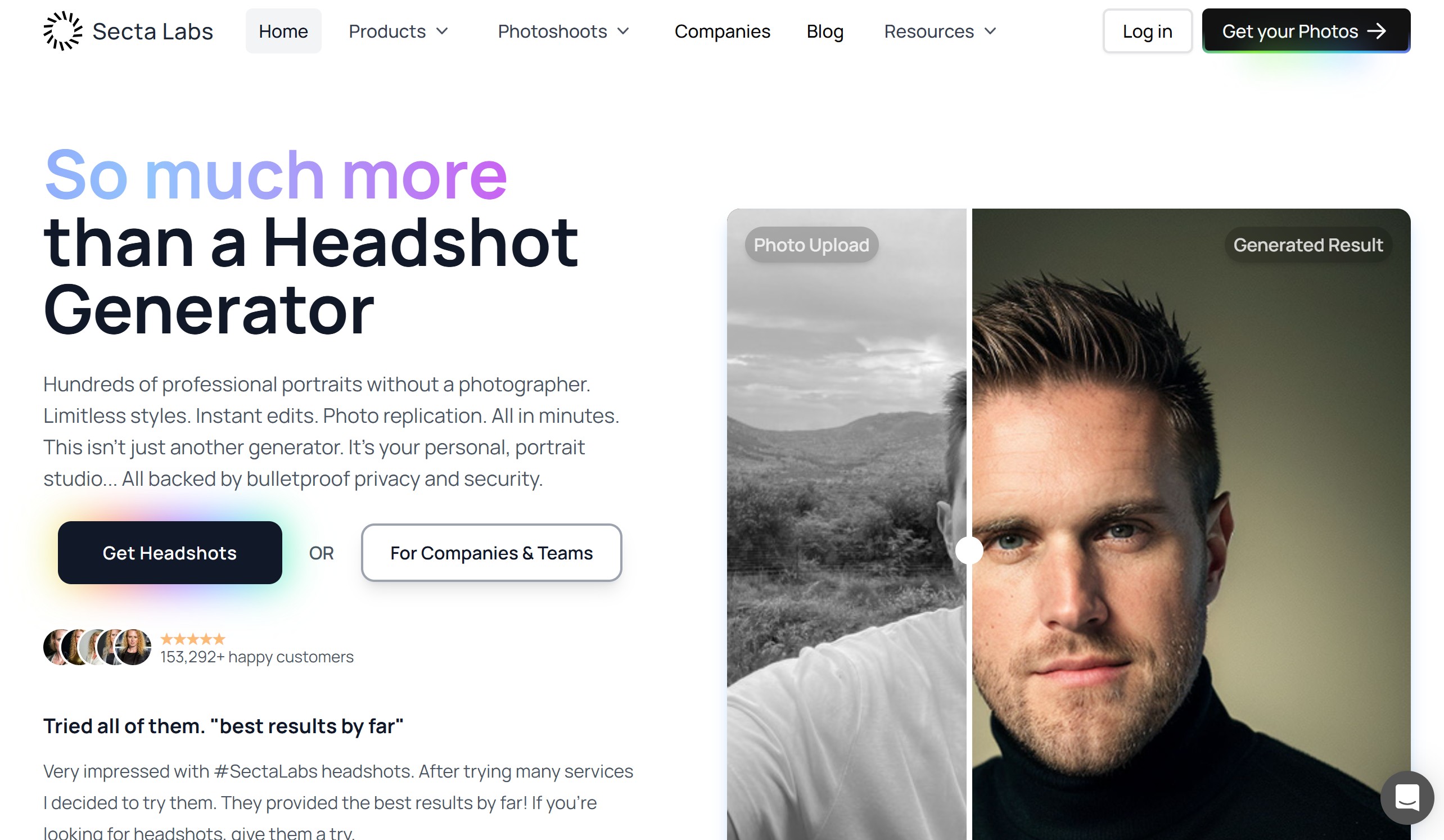
AI-generated headshots come with ethical considerations that every professional should be aware of.
While these tools save time and money, there's a fine line between enhancement and deception.
Maintaining authenticity is key when creating AI-generated photos for professional profiles.
Some users are tempted to make themselves look significantly younger, thinner, or more glamorous using these tools.
But when the headshot doesn’t match your real-life appearance, it can lead to trust issues.
Especially in job interviews or client-facing roles, alignment between your digital and real presence is crucial.
Here are a few best practices to follow ethically:
- Ensure the final headshot is a true representation of your current appearance.
- Avoid unrealistic modifications like eye color changes or excessive facial slimming.
- Always choose tools that respect privacy and delete your uploads.
Tools like Secta Labs and StudioShot AI prioritize realism over glamour, making them safer for business use.
They avoid the “airbrushed” effect that some free tools introduce.
There’s also the question of transparency.
Do you disclose that your headshot was AI-generated?
In most cases, you don’t need to—but the image should still “feel” like you.
AI-generated headshots also challenge traditional photography industries.
Photographers now face competition from algorithms that can create 100+ headshots in minutes.
However, this tech also opens up photography to people who previously couldn’t afford it.
This accessibility benefit is worth emphasizing.
AI photo tools are helping users in rural areas, freelancers without budgets, and disabled professionals who can’t easily travel.
It democratizes professional image creation.
Ultimately, it’s about intent.
If you’re using AI to produce a polished but honest version of yourself, it’s ethical and useful.
But if you’re using it to project a false image, you risk harming your credibility.
As AI becomes more advanced, setting ethical standards will be increasingly important.
The best way to stay on the right side?
Choose realism, transparency, and tools that put authenticity first.
8. Conclusion
AI generated headshots are more than just a trend—they represent a shift in how professionals and businesses approach visual identity online.
As someone who's worked hands-on with many of these tools, I can confidently say the gap between traditional and AI-generated headshots is narrowing fast. The best AI headshot generator tools now deliver output that is not only highly realistic, but also aligned with modern branding needs—from resumes to LinkedIn, from startup teams to personal portfolios.
What makes AI headshot apps so appealing is their blend of affordability, convenience, and customization. You no longer need to schedule a shoot, dress formally, and hope the lighting works in your favor. Instead, you can create studio-quality headshots with AI from your couch—and sometimes for free.
That said, success with AI-generated portrait images still depends on smart usage. Upload well-lit, neutral photos. Choose a tool that respects data privacy. Opt for output that reflects your real personality and professional goals. Whether you're aiming for realistic AI headshots for resumes or more stylized personal branding assets, the market now offers a tailored solution.
Ultimately, AI headshot software for professionals doesn’t replace authenticity—it enhances it. It gives you control over how you present yourself in a digital-first world. And when used with intention, these tools deliver results that open doors.
If you're ready to create headshots with AI, don't settle for average. Pick a platform that aligns with your brand, your audience, and your career trajectory. The right image has the power to connect, convert, and create new opportunities. AI just helps you get there faster.
❓Frequently Asked Questions (FAQs)
1. Are AI generated headshots good enough for LinkedIn?
Yes. With the right tool, AI-generated headshots can meet or exceed the quality required for LinkedIn. Tools like StudioShot AI and Remini optimize images for LinkedIn’s crop and compression settings.
2. Can I use AI headshots on my resume or professional website?
Absolutely. As long as the image accurately reflects your appearance, AI-generated business profile photos are perfectly appropriate for resumes, portfolios, or team pages.
3. Are free AI headshot generators safe to use?
Some are, but always check their privacy policy. Reputable platforms will clearly state whether your photos are stored, deleted, or used for training.
4. What is the difference between AI avatars and AI headshots?
AI avatars are often artistic or stylized, suitable for personal or creative use. AI-generated headshots aim for realism and professionalism, ideal for LinkedIn or corporate branding.
5. Do I need special lighting or cameras to create AI headshots?
No. Most tools require just a few well-lit smartphone selfies. However, using natural lighting and a clean background can greatly improve the final output.
